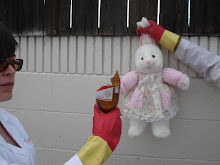So how do these stupid pieces of crap work? Well, I’ll do the best I can to explain the principles of Mass Spectrometry. Some of it will be hand-wavy because I’m not so keen on it myself, but you’ll get the gist. As always, we’ll begin at the beginning and explain the principles that make this instrument necessary.
Think back to the 4th grade when you learned about the atom. The basic components of an atom are protons, neutrons, and electrons. We define an element by its number of protons, but elements can and do have isotopes. An isotope is an atom with the same number of protons, but a different number of neutrons. For example: we’ve got Hydrogen (number 1 on the periodic table of the elements) which has two isotopes – Deuterium and Tritium. The most abundant of the three is plain, ole’ Hydrogen with one proton and one electron. Just an itty-bitty bit of all the Hydrogen we know and love is Deuterium (about 0.002%). Deuterium has one proton, one neutron, and one electron. Tritium has one proton and two neutrons and is radioactive with a half live of about 12 years.
Atoms can have LOTS of isotopes. Most of them are extremely unstable and only exist in the lab. Below is the famous “Chart of the Nuclides”. You’ve got the number of neutrons on the x-axis and the number of protons on the y-axis. The blue line is showing you a one-to-one relationship (protons = neutrons). You can see that the cluster of stable isotopes falls below this line. That’s because it’s really really hard for heavy atoms to be stable. Once you start pilling on the neutrons, you’re atom wants to break apart.
 Since isotopes of the same element have a different number of neutrons, they have different masses. A Mass Spectrometer will let you separate out your isotopes according to those mass differences. Why all the bother, you ask? See “Science Lesson #2: Wally Broeker” for more info on why you would want to know the isotopic composition of something in the first place. Little critters tend to take up the lighter isotope of an element first, be it Sulfur, Carbon, Iron, Oxygen, Silica, etc. This is called fractionation. It’s only by looking at the isotopes of something (like sediments, or pyrite, or shells, or seawater) that you’ll see how much fractionation has been going on. From there you can infer what the biology has been up to.
Since isotopes of the same element have a different number of neutrons, they have different masses. A Mass Spectrometer will let you separate out your isotopes according to those mass differences. Why all the bother, you ask? See “Science Lesson #2: Wally Broeker” for more info on why you would want to know the isotopic composition of something in the first place. Little critters tend to take up the lighter isotope of an element first, be it Sulfur, Carbon, Iron, Oxygen, Silica, etc. This is called fractionation. It’s only by looking at the isotopes of something (like sediments, or pyrite, or shells, or seawater) that you’ll see how much fractionation has been going on. From there you can infer what the biology has been up to.
To illustrate what a Mass Spectrometer actually does, imagine yourself running on a track. Or walking (lazy-pants!). You and a friend are walking along with you on the inside of the track and your friend on the outside. The track is an oval, so once you two reach the turn your friend has to walk faster to keep up with you. If she doesn’t walk faster she'll fall behind because you are a mean friend and won’t wait for her. In principle, this is what happens in a Mass Spectrometer.
Looking at the picture above, our atoms start out all together in the front part of the Mass Spectrometer (1). Let’s skip describing this part because the front end of our Mass Spec can get complicated depending on what kind of instrument you’re using. Our isotopes are spit out and head down what’s called a “Flight Tube” (2). At this point, a big magnet built into the Mass Spec pushes our isotopes around depending on their weight. This has nothing to do with the charge on the atom because our atoms have been stripped of their electrons (ionized). The heavier isotopes are going to take a different trajectory than our lighter isotopes (3). Little detector “cups” record how many atoms came down that path (4). At the end, you know how many isotopes came into each cup and from there you can calculate the abundancies of each isotope in your sample.
So there you have it: the principles behind Mass Spectrometry. A simple premises that is gummed up by complicated machinery. If I was smart I’d quit this grad student shit and get a job as a Mass Spec mechanic because as long as their will be Mass Specs, there will be broken Mass Specs.



No comments:
Post a Comment